Egads! Another vacuform! Falcon Models 1/48 Hawker Seahawk FGA.6
The Falcon Seahawk first came out in around 1988-89. This was done in 2003, using decals scaled up on an ALPS printer by a friend to do the seabird squadron marking of 899 Squadron with other decals from the dungeon. The kit itself is not easy, being split horizontally for the forward fuselage and wing area, then vertically for the rear fuselage and tail. Getting those two to mate is a bit of effort, I used spreader bars inside to get the rear fuselage to have the same dimensions as the forward, glued with cyanoacrylate, followed by a lot of putty and sanding and then rescribing. I also used the KMC resin Martin-Baker M.2 seat which looks good under the very clear vac canopy. Underwing ordnance came from an Airfix Seafire 46/47 kit
Falcon vacuforms are among the best, and their kits such as the Lavochkin La-5FN, Hawker Sea Fury, and Spitfire F.R. XVIII are still among the most accurate kits of those airplanes available in 1/48 (If I could find the Sea Fury, I would do it using the Trumpeter kit as "aftermarket"). The Classic Airframes injection kit of a few years later was truly terrible, with a lot of effort to grind down the resin cockpit tub so it would fit in the fuselage and even with most of that gone it still only barely fit, and I had to superglue, clamp and zap each side of the forward fuselage separately, then add in a lot of putty. I used the extra Falcon canopy since the CA canopy is thick and the wrong shape. When complete and displayed next to each other, from a distance of a foot you can't tell which is which. Trumpeter also released a Sea Hawk in 2007, which is far easier to build than either the Falcon or Classic Airframes kits and makes them obsolete. I have added in four photos of the Classic Airframes kit and four of the Trumpeter kit for comparison, the CA model being in the markings of 804 Squadron aboard HMS Bulwark, while the Trumpeter kit is in the markings of 810 Squadron aboard HMS Albion.
The Hawker Sea Hawk was the first completely successful British jet-powered carrier fighter. It was roughly equivalent to the U.S. Grumman F9F Panther, with which it shared a powerplant - the very successful Nene centrifugal turbojet - and of similar performance to the U.S. Navy's jet mainstay of the Korean War. While the Sea Hawk began its development process two years prior to the Panther, it first flew in the same year as the XF9F-2, and yet it entered service with the Fleet Air Arm in 1951, three years after the Panther had reached the same milestone. Even so, it was the most successful British jet of the postwar period, a time marked by a strange technological lethargy in the British aviation industry.
The P.1040, as the Sea Hawk was initially know at Hawkers, began as a proposal for a single-engine jet fighter in the fall of 1944, which was not acted on until nearly a year later when it was rejected by the Air Ministry in favor of maximizing production of Meteors and Vampires. In January 1946, the design was proposed to the Admiralty as a carrier-based fighter; this resulted in an order in May 1946 for three prototypes, the first of which flew September 2, 1947 - within a few months of the XF9F-2 in the U.S.
The most original feature was the bifurcated engine exhaust, which neatly solved the problem of excessive loss of thrust associated with early turbojets when a longer exhaust pipe was used. While the casual observer might think the Sea Hawk a twin-engine design like the McDonnell F2H Banshee, it had a single Nene at the center of gravity, which greatly aided its handling in flight. Pilots enjoyed the outstanding handling characteristics of the Sea Hawk, which were in direct opposition to the Supermarine Attacker, the other naval jet fighter under development at the time. Pilots particularly liked the fact the cockpit was as far forward as it was, giving good visibility for both combat and carrier landings.
The Sea Hawk F.Mk.1 was ordered into production in 1949. The outbreak of the Korean War gave added impetus to the need for the airplane, but Hawker was now deeply involved in the problems associated with creation of the Hunter. Production was shifted to Sir W. G. Armstrong Whitworth Aircraft, which had responsibility for further development and all production past the first 35 F.Mk.1s, the first of which flew November 14, 1951. Service trials with the Hawker-built aircraft occupied most of 1952 while production hit its stride at Armstrong-Whitworth. 806 became the first operational Sea Hawk squadron in March 1953.
Following production of 60 Mk.1s, 40 F. Mk.2s appeared with powered controls. The demand for increased operational versatility was met with 116 F.B.Mk.3s which could carry bombs in place of the under wing drop tanks. The 97 FGA Mk.4s appeared with a "4 store" wing and the ability to carry rockets outboard of the pylons, but performance suffered. The Admiralty decided to upgrade the FB Mk.3s and FGA Mk.4s with the Nene 103, offering an increase in power from 5,000 to 5,200 lbs of thrust, to be known as the FGA Mk. 5 and Mk.6 respectively. Few were re-engined, but 87 new-build FGA Mk.6s were taken into service. When the last of these were delivered in January 1956, production of the Sea Hawk for the FAA came to an end.
In the spring of 1956, the Sea Hawk began a second production life, when the Royal Netherlands Navy ordered 22 to replace their Hawker Sea Furies; these were delivered july 1957 and January 1958. In March 1958 they became the first European fighter armed with the Sidewinder AAM, and remained in first-line service until 1964.
Following the Dutch order, the Federal German Republic ordered 64 FGA Mk.6s for its newly-reborn Marineflieger. These, the Sea Hawk Mk. 100 and 101, were distinguished by a larger vertical fin and rudder, and the first was delivered in February 1958. 52 of these were delivered knocked-down and assembled by the Focke-Wulf Company, which assumed responsibility for maintenance and repair.
In late 1959, the Indian Navy purchased 9 Sea Hawk F.B. Mk.3s which were refurbished to Mk. 6 standards. This was followed by an order for 14 new-build FGA Mk.6s in 1961, which became the last new Sea Hawks built. 22 more ex-Royal Navy aircraft were purchased in 1961-62. All served with No. 300 "White Tiger" squadron aboard INS "Vikrant." 28 German aircraft were purchased as attrition replacements in 1966. These Sea Hawks served as the first line fighter strength of the Indian Navy until they were replaced by Sea Harriers in 1983-84, which makes the Sea Hawk one of the longest-serving first-generation jet fighters.
Operation Musketeer:
"Operation Musketeer", the Anglo-French-Israeli plan to regain control of the Suez Canal following nationalization by President Nasser the year previous, was carried out in October and early November 1956. Sea Hawks were operated by 800, 802 and 810 Squadrons aboard HMS "Albion," 804 and 897 Squadrons aboard HMS "Bulwark," and 899 Squadron aboard HMS "Eagle," making the Sea Hawk numerically the most important British airplane operational during the conflict.
The Sea Hawks were given the assignment of neutralizing the Egyptian Air Force and protecting the Anglo-French strike aircraft against attacks by the Egyptian MiG-15s, as well as defending the fleet against possible attacks by the Il-28 "Beagle" aircraft the Egyptians were known to possess. Most of these aircraft were grounded because the Egyptians did not have enough trained crews yet to man them. The Sea Hawks neutralized the Egyptian Air Force bases and then proceeded to provide close air support to the Anglo-French paratroops dropped in the Canal Zone. The Sea Hawk proved as adept at this work as had the Grumman Panther during the Korean War. This was the only combat the Sea Hawk experienced during its long career, other than the attacks made from the Indian carrier Vikrant during the 1971 India-Pakistan war over Bangladesh.
In the years after Operation Musketeer, the Sea Hawk was replaced by the Scimitar and the Sea Vixen. The last squadron to replace its Sea Hawks in 1960 was 806, which had been the first to equip with the type nearly eight years earlier.
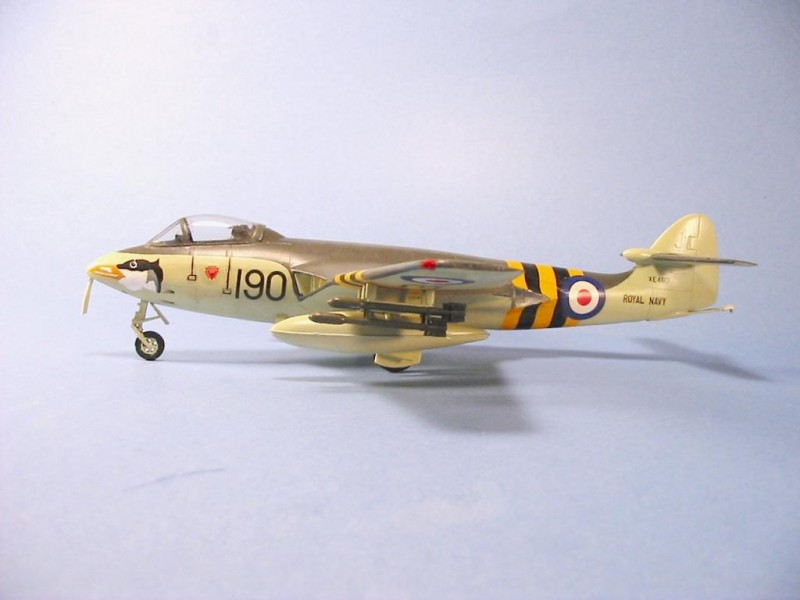

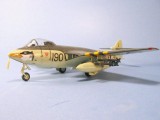
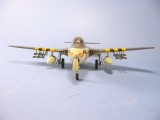
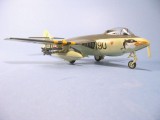
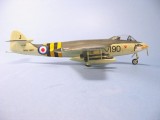
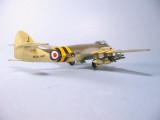
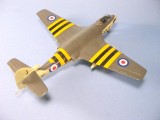
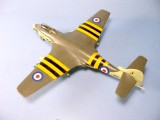
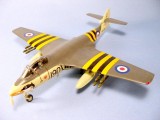
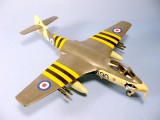

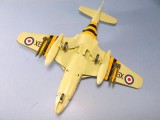
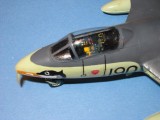
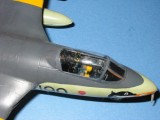
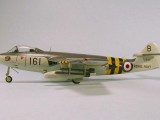
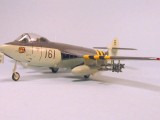
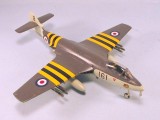
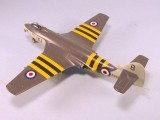

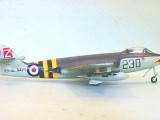
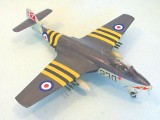
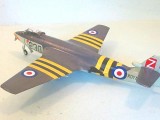
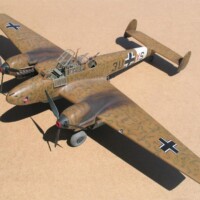

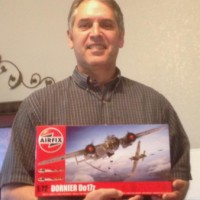
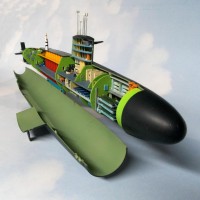
Very nice to look at, Tom. Thanks for the aircraft history as well. It adds a lot to linking the model with the real aircraft's history.
Suez absolute balls-up re British prestige internationally, but ironically resulted in some grea aircraft types in operation.
Nice build.
Great looking build, Tom. Vacs scare me...
Me too 🙂
Great job, Tom, lots of extra points for being a vacuform build! From your build description I would have tossed the thing at the fuselage assembly. And, as always, a nice bit of info on an unfamiar (to me) aircraft.
Great Job on a classic vac kit Tom. I'm debating on doing a Koster vac kit myself.